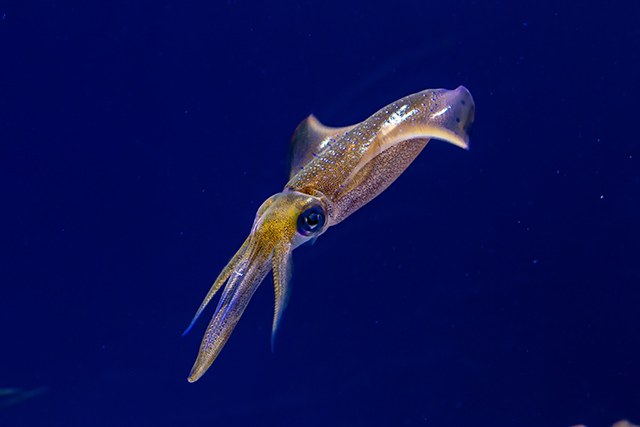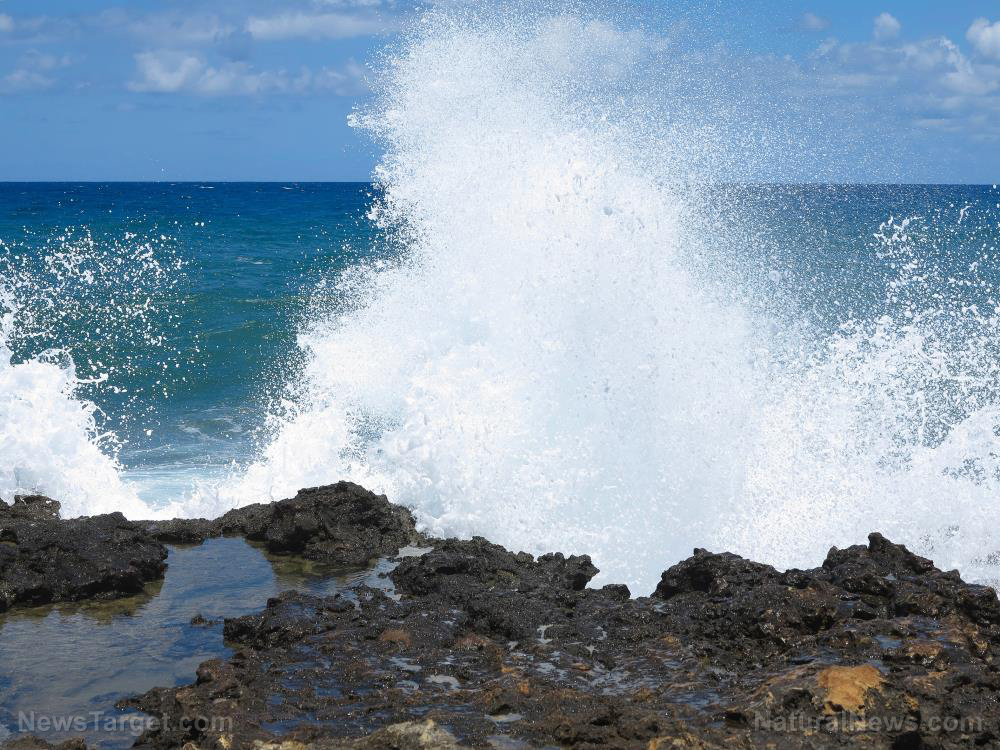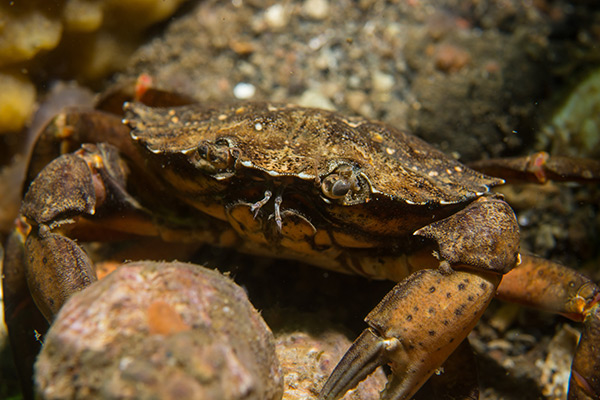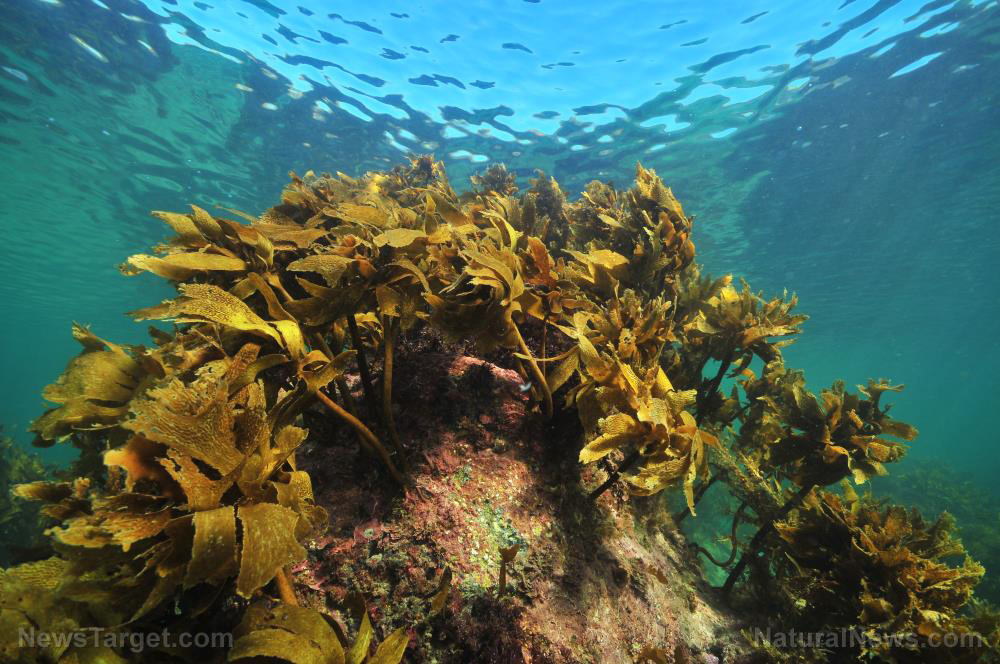Amazing aquatic life: Blue-banded sea snakes “breathe” through their heads
08/26/2020 / By Michael Alexander

Sea snakes, despite their name, still need to surface to get air to breathe. Australian researchers, however, have found one species that has developed an organ that lets it effectively “breathe” underwater for a limited time.
Blue-banded sea snakes (Hydrophis cyanocinctus) are aquatic reptiles that can reach up to around 5 feet or 1.5 meters in length. Endemic to the tropical waters near the coasts and coral reefs of Southeast Asia, they are known for their paddle-like tails and for preying on small crustaceans and fish.
According to lead researcher Alessandro Palci, a biologist at Flinders University, blue-banded sea snakes can actually breathe underwater for a limited time by using a network of blood vessels in their heads that provide a large surface area for oxygen absorption. This dissolved oxygen, Palci said, is then passed through the skull to the brain, thus allowing the aquatic reptile to stay underwater for longer before it needs to surface for air.
Palci, an evolutionary researcher, noted in the study that this is the first time that the organ – dubbed a “modified cephalic vascular network” (MCVN) – has been described.
“For the first time, we describe this modified cephalic vascular network that provides this sea snake with a complimentary supply of oxygen to the brain during submersion,” Palci said, adding that the organ basically allows the snake to use the top of its head to breathe underwater.
Palci clarified, however, that while the MCVN functions similarly to the gills of fish and amphibians, it is structurally very different.
Unique organ lets sea snakes stay underwater for much longer
As detailed in the journal Royal Society Open Science, the researchers mapped this organ by using a combination of traditional and computer-assisted methods, including microtomography (MicroCT) scanners which use X-rays to build up a complex 3D model of a subject from a series of individual cross-sections.
Because of this combination of methods, the researchers, alongside other experts from the South Australian Museum and Vietnam Academy of Science and Technology, were able to generate images of the soft tissues surrounding the snake’s skull. (Related: Venom from the world’s deadliest snakes could be used for pain relief.)
According to the researchers, upon the generation of the images, they found a hole or a “foramen” in the roof of the H. cyanocinctus’ skull, which they said is reminiscent of the “pineal foramen” found in several lizard species, which contains a tiny light-sensitive organ called the pineal eye.
This was an interesting discovery, the researchers said, especially since modern snakes do not exhibit this foramen unlike several extant lizards, with whom they share a common evolutionary ancestor.
What they found was that instead of having a pineal eye, blue-banded sea snakes have a large blood vessel in its place. This blood vessel, the researchers said, travels forward and branches into a complex network of veins and sinuses immediately under the skin of the snake’s forehead and snout.
“Our study expands understanding of the unusual cutaneous respiratory anatomy of sea snakes,” Kate Sanders, a researcher from the University of Adelaide School of Biological Sciences and the study’s co-author, said.
“Sea snakes have been extremely successful at adapting to a fully marine lifestyle, including the ability to absorb oxygen through their skin,” Sanders said, referring to roughly 60 species of sea snakes that have evolved several abilities for adapting to marine life, such as the ability to absorb oxygen and eliminate carbon dioxide through their skin, the ability to expel excess salt, nostrils that plug shut using valves and powerful venom to ensure success in their hunts.
The researchers note, however, that additional research is still needed in order to fully understand how this newly-discovered organ works.
For more stories about the weird and wonderful realm of animal science, visit WeirdScienceNews.com.
Sources include:
Submit a correction >>
Tagged Under:
amazing, animal science, animal skulls, biology, discoveries, foramen, marine animals, modified cephalic vascular network, ocean life, reptiles, research, science, sea snakes, snakes, weird science
This article may contain statements that reflect the opinion of the author
RECENT NEWS & ARTICLES
OceanHealthNews.com is a fact-based public education website published by Ocean Health News Features, LLC.
All content copyright © 2018 by Ocean Health News Features, LLC.
Contact Us with Tips or Corrections
All trademarks, registered trademarks and servicemarks mentioned on this site are the property of their respective owners.





















